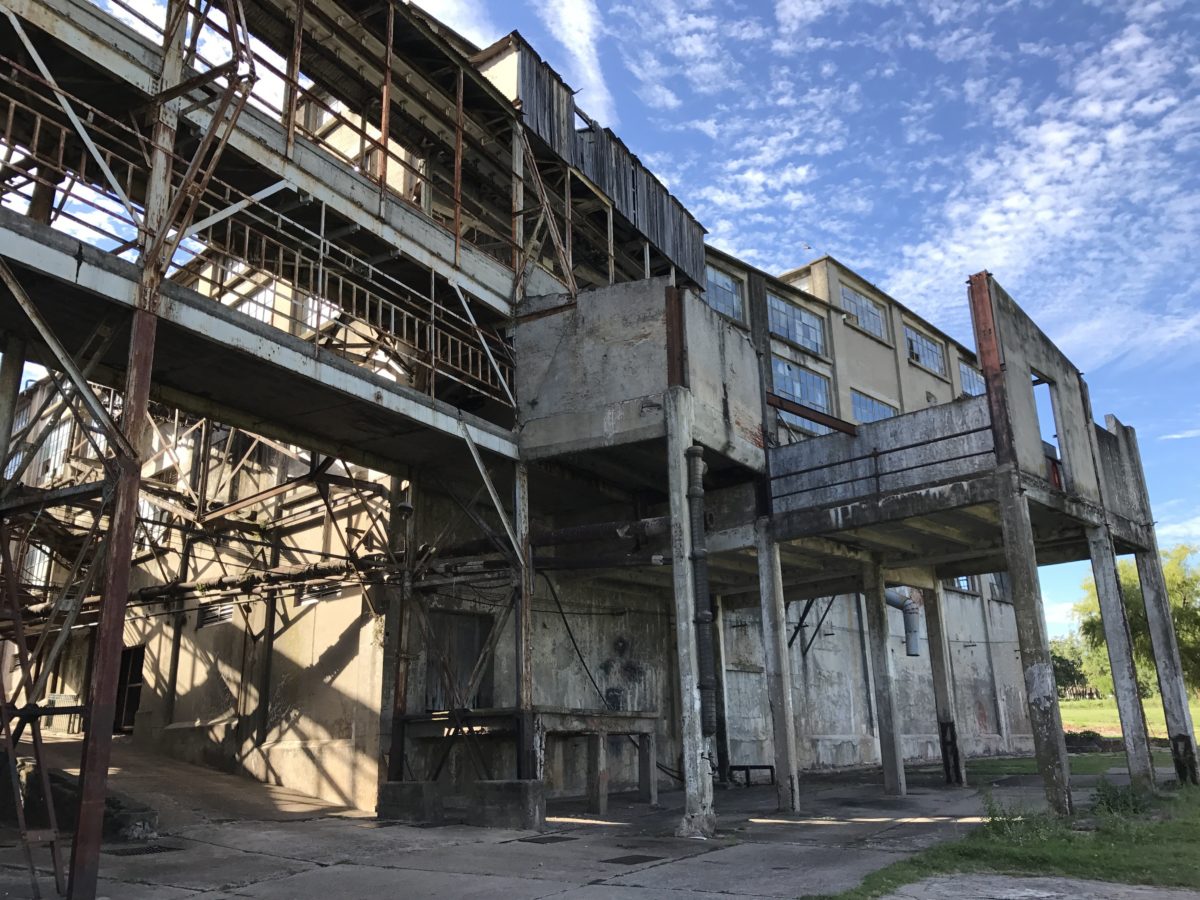March 31, 2017
In March 2017, my travel pics and WWI tweets converged in the western Uruguay town of Fray Bentos – home of the OXO bouillon cube.

In 1840s, German scientist Justus von Liebig became convinced the common practice of boiling beef destroyed much of its nutritional value.

In 1847, Liebig invented “meat extract” as a means of capturing those nutrients. It could also be dehydrated into powder cubes for broth.


Liebig made quite a number of other major scientific contributions, and is considered the father of organic chemistry.

In 1862, Liebig formed a company and built a factory in Fray Bentos, Uruguay to turn local cattle into bouillon cubes for global export.

Liebig’s meat extract factory was, at that time (1860s), the largest industrial facility in all of Latin America.

Here’s a metal floor plate inside the Fray Bentos factory that dates from nearly its first construction.

Beef products shipped from Fray Bentos helped feed Britain through both world wars, and OXO cubes were particularly prized in WWI trenches.


Besides OXO beef cubes, Fray Bentos also sold tinned corned beef under the Anglo brand.

… as well as tinned meat pies under the “Fray Bentos” brand.

When live cattle first arrived at Fray Bentos, they went through this bath ….

… and up a ramp to the slaughter house. EVERY part of the cow was used, turned into meat, leather, tallow, etc.

These ramps connected the slaughter house to the various processing facilities. (Fray Bentos, Uruguay)

A production line for packaging corned beef into tin cans. Fray Bentos, Uruguay.

Before electricity, all of the production lines were powered by belts from shaft along the ceiling, run by central steam engines.

Beef to be turned into OXO cubes was first boiled in these big heated vats for several hours. (Fray Bentos, Uruguay).

The beef stock produced was then placed under these evaporators (bottom and top views) to be turned into concentrated extract.

In the 1920s, the company built a huge refrigeration plant for exporting fresh chilled beef, which looms over the whole facility.

Here are the huge compressors that drove the refrigeration plant and other machinery throughout the complex (Fray Bentos, Uruguay).




Things must have been a bit quieter next door in the main office.

This machine is an early version of typewriter that pre-dates the keypad. It’s like an early mouse: point and click (Fray Bentos, Uruguay).

People talk about “punching in” to work, well here it is: the factory administrative office’s punch card time clock (Fray Bentos, Uruguay).

Here is the factory dock on the River Uruguay where meat products were shipped all over the world. On the other side is Argentina.

Machine for heating and sterilizing tins of corned beef after they’ve been packed. (Fray Bentos, Uruguay).

View of the Anglo meat extract factory in Fray Bentos, Uruguay during its heyday, in the early 20th Century.

After Britain joined the EU, trade patterns shifted and the Fray Bentos plant in Uruguay suffered, and finally shut its doors in 1979.

But the factory’s legacy lives on, not least in the name of the local soccer team, the “Anglos” (Fray Bentos, Uruguay).

Today Fray Bentos is home to a huge new factory, the largest single investment in Uruguay’s history: a wood pulp plant opened in 2007.

The Fray Bentos pulp plant triggered a big dispute between Uruguay and Argentina.

So if you’ve ever been to London and wondered (like I did) what this prominent OXO sign was all about, now you know. The end.

Leave a Reply